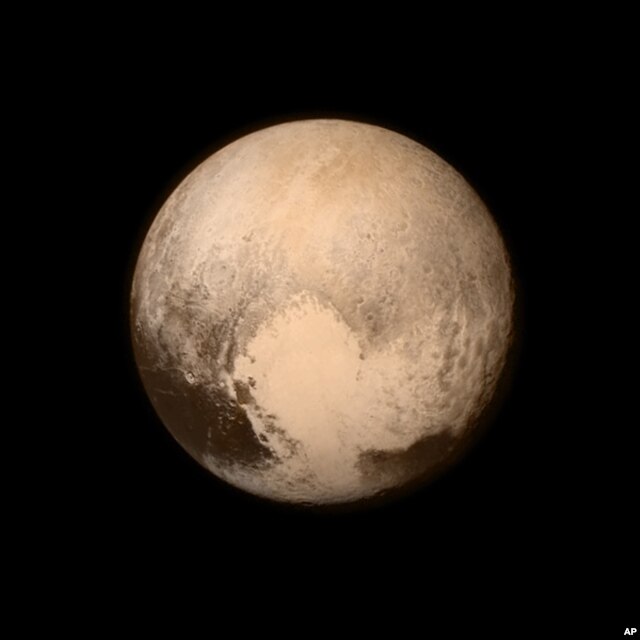US Spacecraft Sails by Pluto, Capping 9-year Journey

AUREL, MARYLAND—A U.S. spacecraft sailed past the tiny planet Pluto in the most distant reaches of the solar system on Tuesday, capping a journey of 3 billion miles (4.88 billion km) that began nine-and-a-half years ago.
NASA’s New Horizons spacecraft passed by the ice-and-rock planetoid and its entourage of five moons at 7:49 a.m. Eastern (1149 GMT). The event culminated an initiative to explore the solar system that the space agency embarked upon more than 50 years ago.
«It’s truly a mark in human history,» John Grunsfeld, NASA’s associate administrator for science, said from the mission control center at Johns Hopkins University Applied Physics Laboratory outside Baltimore.
New Horizons was expected to continue observing Pluto for several hours after it made its closest approach to the unexplored world, coming within 7,750 miles (12,472 km) of the sphere.
This July 13, 2015 image provided by NASA shows Pluto from the New Horizons spacecraft. The United States is now the only nation to visit every single planet in the solar system. 왕성의 모습.
While the observations are underway, New Horizons was in radio blackout, so confirmation that it completed its mission will not come until around 9 p.m. on Tuesday.
«We programmed it to be spending its time taking data that it can only take today,» lead researcher Alan Stern told reporters after the fly-by.
The diminutive spacecraft, which is about the size of a piano, is not equipped with the propellant needed to brake and slip into orbit around Pluto. Like NASA’s Voyagers and sister predecessor exploratory spacecraft, New Horizons was designed to conduct its survey on the fly.
Managers estimate there is a 1-in-10,000 chance that a debris strike could destroy New Horizons as it traverses the Pluto system.
«I am feeling a little bit nervous, but I have absolute confidence that it’s going to do what it needs to do to collect science and it’s going to turn around and … tell us that it’s OK,» said Alice Bowman, the mission operations manager.
With 99 percent of the data gathered about Pluto still on the spaceship, its survival is critical to the mission.
Already, the trickle of images and measurements coming from New Horizons has changed scientists’ understanding of Pluto.
Once considered an icy, dead world, the planetoid has yielded signs of geological activity, with evidence of past and possibly present-day tectonics, or movements of its crust.
«This is clearly a world where both geology and atmosphere climatology play a role,» Stern said.
Pluto circles the sun every 248 years in a highly tilted orbit that creates radical changes from season to season. Pluto travels closer to the sun than the orbit of Neptune before it cycles back into the solar system’s deep freeze more than 40 times farther away than Earth.
Scientists have many questions about Pluto, which was still considered the solar system’s ninth planet when New Horizons was launched in 2006. Pluto was reclassified as a «dwarf planet» after the discovery of other Pluto-like spheres orbiting in the Kuiper Belt, the region beyond the eighth planet, Neptune.
The objects are believed to be remnants from the formation of the solar system 4.6 billion years ago.
It will take about 16 months for New Horizons to transmit back all the images and measurements taken during its pass by Pluto. By then, the spacecraft will have traveled even deeper into the Kuiper Belt, heading for a possible follow-on mission to one of Pluto’s cousins.


